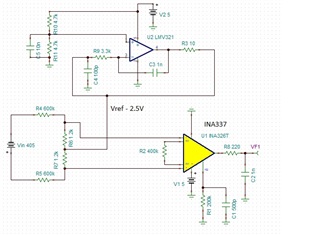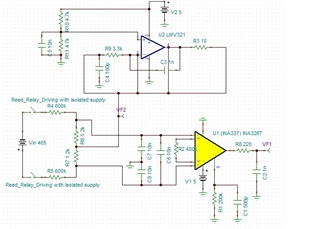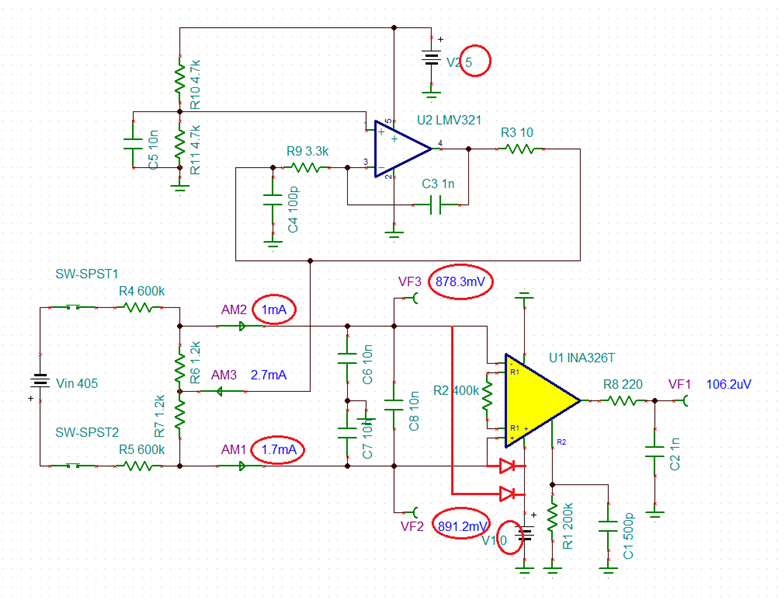Other Parts Discussed in Thread: LMV321, INA321
Hai,
I am using INA337 instrumentational amplifier with gain of 1 for reading a high voltage 405V signal with resistor divider network as per the attached schematic. I have added a 2.5V reference for this circuit at input as a common mode voltage.
At normal or most of the time I am getting a result of 808.3mV at the output of the amplifier but at some cases getting 5V at the output pin. If I Power reset the circuit then it is working normal again. I am unable to understand what could be the reason for this malfunction.
Regards
Venkat






